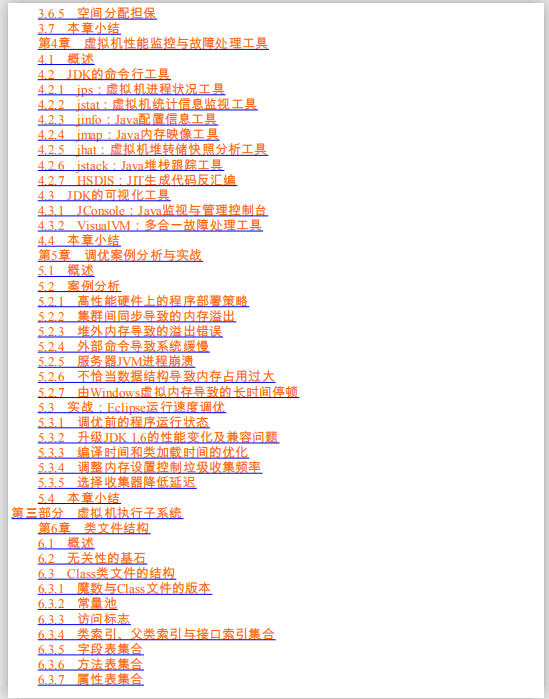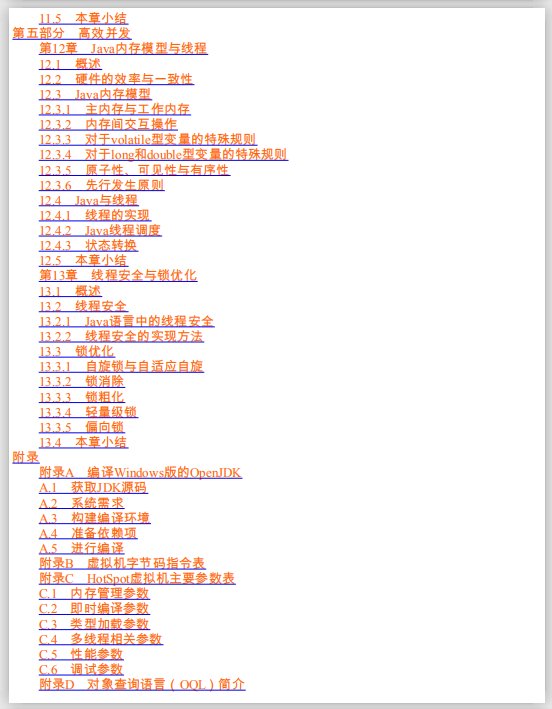在使用 JDBC 时,我们都是通过 DriverManager 的接口方法获取数据库连接。本节所要分析的源码也不例外,一起看一下吧。
// -☆- UnpooledDataSource
public Connection getConnection() throws SQLException {
return doGetConnection(username, password);
}
private Connection doGetConnection(String username, String password) throws SQLException {
Properties props = new Properties();
if (driverProperties != null) {
props.putAll(driverProperties);
}
if (username != null) {
// 存储 user 配置
props.setProperty("user", username);
}
if (password != null) {
// 存储 password 配置
props.setProperty("password", password);
}
// 调用重载方法
return doGetConnection(props);
}
private Connection doGetConnection(Properties properties) throws SQLException {
// 初始化驱动
initializeDriver();
// 获取连接
Connection connection = DriverManager.getConnection(url, properties);
// 配置连接,包括自动提交以及事务等级
configureConnection(connection);
return connection;
}
private void configureConnection(Connection conn) throws SQLException {
if (autoCommit != null && autoCommit != conn.getAutoCommit()) {
// 设置自动提交
conn.setAutoCommit(autoCommit);
}
if (defaultTransactionIsolationLevel != null) {
// 设置事务隔离级别
conn.setTransactionIsolation(defaultTransactionIsolationLevel);
}
}
如上,上面方法将一些配置信息放入到 Properties 对象中,然后将数据库连接和 Properties 对象传给 DriverManager 的 getConnection 方法即可获取到数据库连接。
好了,关于 UnpooledDataSource 就先说到这。下面分析一下 PooledDataSource,它的实现要复杂一些。
[]( )4.PooledDataSource
PooledDataSource 内部实现了连接池功能,用于复用数据库连接。因此,从效率上来说,PooledDataSource 要高于 UnpooledDataSource。PooledDataSource 需要借助一些辅助类帮助它完成连接池的功能,所以接下来,我们先来认识一下相关的辅助类。
[]( )4.1 辅助类介绍
PooledDataSource 需要借助两个辅助类帮其完成功能,这两个辅助类分别是 PoolState 和 PooledConnection。PoolState 用于记录连接池运行时的状态,比如连接获取次数,无效连接数量等。同时 PoolState 内部定义了两个 PooledConnection 集合,用于存储空闲连接和活跃连接。PooledConnection 内部定义了一个 Connection 类型的变量,用于指向真实的数据库连接。以及一个 Connection 的代理类,用于对部分方法调用进行拦截。至于为什么要拦截,随后将进行分析。除此之外,PooledConnection 内部也定义了一些字段,用于记录数据库连接的一些运行时状态。接下来,我们来看一下 PooledConnection 的定义。
class PooledConnection implements InvocationHandler {
private static final String CLOSE = "close";
private static final Class<?>[] IFACES = new Class<?>[]{Connection.class};
private final int hashCode;
private final PooledDataSource dataSource;
// 真实的数据库连接
private final Connection realConnection;
// 数据库连接代理
private final Connection proxyConnection;
// 从连接池中取出连接时的时间戳
private long checkoutTimestamp;
// 数据库连接创建时间
private long createdTimestamp;
// 数据库连接最后使用时间
private long lastUsedTimestamp;
// connectionTypeCode = (url + username + password).hashCode()
private int connectionTypeCode;
// 表示连接是否有效
private boolean valid;
public PooledConnection(Connection connection, PooledDataSource dataSource) {
this.hashCode = connection.hashCode();
this.realConnection = connection;
this.dataSource = dataSource;
this.createdTimestamp = System.currentTimeMillis();
this.lastUsedTimestamp = System.currentTimeMillis();
this.valid = true;
// 创建 Connection 的代理类对象
this.proxyConnection = (Connection) Proxy.newProxyInstance(Connection.class.getClassLoader(), IFACES, this);
}
@Override
public Object invoke(Object proxy, Method method, Object[] args) throws Throwable {...}
java
// 省略部分代码
}
下面再来看看 PoolState 的定义。
public class PoolState {
protected PooledDataSource dataSource;
// 空闲连接列表
protected final List<PooledConnection> idleConnections = new ArrayList<PooledConnection>();
// 活跃连接列表
protected final List<PooledConnection> activeConnections = new ArrayList<PooledConnection>();
// 从连接池中获取连接的次数
protected long requestCount = 0;
// 请求连接总耗时(单位:毫秒)
protected long accumulatedRequestTime = 0;
// 连接执行时间总耗时
protected long accumulatedCheckoutTime = 0;
// 执行时间超时的连接数
protected long claimedOverdueConnectionCount = 0;
// 超时时间累加值
protected long accumulatedCheckoutTimeOfOverdueConnections = 0;
// 等待时间累加值
protected long accumulatedWaitTime = 0;
// 等待次数
protected long hadToWaitCount = 0;
// 无效连接数
protected long badConnectionCount = 0;
}
上面对 PooledConnection 和 PoolState 的定义进行了一些注释,这两个类中有很多字段用来记录运行时状态。但在这些字段并非核心,因此大家知道每个字段的用途就行了。关于这两个辅助类的介绍就先到这
[]( )4.2 获取连接
前面已经说过,PooledDataSource 会将用过的连接进行回收,以便可以复用连接。因此从 PooledDataSource 获取连接时,如果空闲链接列表里有连接时,可直接取用。那如果没有空闲连接怎么办呢?此时有两种解决办法,要么创建新连接,要么等待其他连接完成任务。具体怎么做,需视情况而定。下面我们深入到源码中一探究竟。
public Connection getConnection() throws SQLException {
// 返回 Connection 的代理对象
return popConnection(dataSource.getUsername(), dataSource.getPassword()).getProxyConnection();
}
private PooledConnection popConnection(String username, String password) throws SQLException {
boolean countedWait = false;
PooledConnection conn = null;
long t = System.currentTimeMillis();
int localBadConnectionCount = 0;
while (conn == null) {
synchronized (state) {
// 检测空闲连接集合(idleConnections)是否为空
if (!state.idleConnections.isEmpty()) {
// idleConnections 不为空,表示有空闲连接可以使用
conn = state.idleConnections.remove(0);
} else {
/*
* 暂无空闲连接可用,但如果活跃连接数还未超出限制
*(poolMaximumActiveConnections),则可创建新的连接
*/
if (state.activeConnections.size() < poolMaximumActiveConnections) {
// 创建新连接
conn = new PooledConnection(dataSource.getConnection(), this);
} else { // 连接池已满,不能创建新连接
// 取出运行时间最长的连接
PooledConnection oldestActiveConnection = state.activeConnections.get(0);
// 获取运行时长
long longestCheckoutTime = oldestActiveConnection.getCheckoutTime();
// 检测运行时长是否超出限制,即超时
if (longestCheckoutTime > poolMaximumCheckoutTime) {
// 累加超时相关的统计字段
state.claimedOverdueConnectionCount++;
state.accumulatedCheckoutTimeOfOverdueConnections += longestCheckoutTime;
state.accumulatedCheckoutTime += longestCheckoutTime;
// 从活跃连接集合中移除超时连接
state.activeConnections.remove(oldestActiveConnection);
// 若连接未设置自动提交,此处进行回滚操作
if (!oldestActiveConnection.getRealConnection().getAutoCommit()) {
try {
oldestActiveConnection.getRealConnection().rollback();
} catch (SQLException e) {...}
}
/*
* 创建一个新的 PooledConnection,注意,
* 此处复用 oldestActiveConnection 的 realConnection 变量
*/
conn = new PooledConnection(oldestActiveConnection.getRealConnection(), this);
/*
* 复用 oldestActiveConnection 的一些信息,注意 PooledConnection 中的
* createdTimestamp 用于记录 Connection 的创建时间,而非 PooledConnection
* 的创建时间。所以这里要复用原连接的时间信息。
*/
conn.setCreatedTimestamp(oldestActiveConnection.getCreatedTimestamp());
conn.setLastUsedTimestamp(oldestActiveConnection.getLastUsedTimestamp());
// 设置连接为无效状态
oldestActiveConnection.invalidate();
} else { // 运行时间最长的连接并未超时
try {
if (!countedWait) {
state.hadToWaitCount++;
countedWait = true;
}
long wt = System.currentTimeMillis();
// 当前线程进入等待状态
state.wait(poolTimeToWait);
state.accumulatedWaitTime += System.currentTimeMillis() - wt;
} catch (InterruptedException e) {
break;
}
}
}
}
if (conn != null) {
/*
* 检测连接是否有效,isValid 方法除了会检测 valid 是否为 true,
* 还会通过 PooledConnection 的 pingConnection 方法执行 SQL 语句,
* 检测连接是否可用。pingConnection 方法的逻辑不复杂,大家可以自行分析。
* 另外,官方文档在介绍 POOLED 类型数据源时,也介绍了连接有效性检测方面的
* 属性,有三个:poolPingQuery,poolPingEnabled 和
* poolPingConnectionsNotUsedFor。关于这三个属性,大家可以查阅官方文档
*/
if (conn.isValid()) {
if (!conn.getRealConnection().getAutoCommit()) {
// 进行回滚操作
conn.getRealConnection().rollback();
}
conn.setConnectionTypeCode(assembleConnectionTypeCode(dataSource.getUrl(), username, password));
// 设置统计字段
conn.setCheckoutTimestamp(System.currentTimeMillis());
conn.setLastUsedTimestamp(System.currentTimeMillis());
state.activeConnections.add(conn);
state.requestCount++;
state.accumulatedRequestTime += System.currentTimeMillis() - t;
} else {
// 连接无效,此时累加无效连接相关的统计字段
state.badConnectionCount++;
localBadConnectionCount++;
conn = null;
if (localBadConnectionCount > (poolMaximumIdleConnections
+ poolMaximumLocalBadConnectionTolerance)) {
throw new SQLException(...);
}
}
}
}
}
if (conn == null) {
throw new SQLException(...);
}
return conn;
}
上面代码冗长,过程比较复杂,下面把代码逻辑梳理一下。从连接池中获取连接首先会遇到两种情况:
-
连接池中有空闲连接
- 连接池中无空闲连接
对于第一种情况,处理措施就很简单了,把连接取出返回即可。对于第二种情况,则要进行细分,会有如下的情况。
-
活跃连接数没有超出最大活跃连接数
- 活跃连接数超出最大活跃连接数
对于上面两种情况,第一种情况比较好处理,直接创建新的连接即可。至于第二种情况,需要再次进行细分。
-
活跃连接的运行时间超出限制,即超时了
- 活跃连接未超时
对于第一种情况,我们直接将超时连接强行中断,并进行回滚,然后复用部分字段重新创建 PooledConnection 即可。对于第二种情况,目前没有更好的处理方式了,只能等待了。下面用一段伪代码演示各种情况及相应的处理措施,如下:
if (连接池中有空闲连接) {
1. 将连接从空闲连接集合中移除
} else {
if (活跃连接数未超出限制) {
1. 创建新连接
} else {
1. 从活跃连接集合中取出第一个元素
2. 获取连接运行时长
if (连接超时) {
1. 将连接从活跃集合中移除
2. 复用原连接的成员变量,并创建新的 PooledConnection 对象
} else {
1. 线程进入等待状态
2. 线程被唤醒后,重新执行以上逻辑
}
}
}
1. 将连接添加到活跃连接集合中
2. 返回连接
最后用一个流程图大致描绘 popConnection 的逻辑,如下:

[]( )4.3 回收连接
相比于获取连接,回收连接的逻辑要简单的多。回收连接成功与否只取决于空闲连接集合的状态,所需处理情况很少,因此比较简单。下面看一下相关的逻辑。
protected void pushConnection(PooledConnection conn) throws SQLException {
synchronized (state) {
// 从活跃连接池中移除连接
state.activeConnections.remove(conn);
if (conn.isValid()) {
// 空闲连接集合未满
if (state.idleConnections.size() < poolMaximumIdleConnections
&& conn.getConnectionTypeCode() == expectedConnectionTypeCode) {
state.accumulatedCheckoutTime += conn.getCheckoutTime();
// 回滚未提交的事务
if (!conn.getRealConnection().getAutoCommit()) {
conn.getRealConnection().rollback();
}
// 创建新的 PooledConnection
PooledConnection newConn = new PooledConnection(conn.getRealConnection(), this);
state.idleConnections.add(newConn);
// 复用时间信息
newConn.setCreatedTimestamp(conn.getCreatedTimestamp());
newConn.setLastUsedTimestamp(conn.getLastUsedTimestamp());
// 将原连接置为无效状态
conn.invalidate();
// 通知等待的线程
state.notifyAll();
} else { // 空闲连接集合已满
state.accumulatedCheckoutTime += conn.getCheckoutTime();
// 回滚未提交的事务
if (!conn.getRealConnection().getAutoCommit()) {
conn.getRealConnection().rollback();
}
// 关闭数据库连接
### 最后
**经过日积月累, 以下是小编归纳整理的深入了解Java虚拟机文档,希望可以帮助大家过关斩将顺利通过面试。**
由于整个文档比较全面,内容比较多,篇幅不允许,下面以截图方式展示 。如有需要获取资料文档的朋友,[可以点击这里免费获取](https://gitee.com/vip204888/java-p7)







**由于篇幅限制,文档的详解资料太全面,细节内容太多,所以只把部分知识点截图出来粗略的介绍,每个小节点里面都有更细化的内容!**原创文章,作者:奋斗,如若转载,请注明出处:https://blog.ytso.com/140415.html
